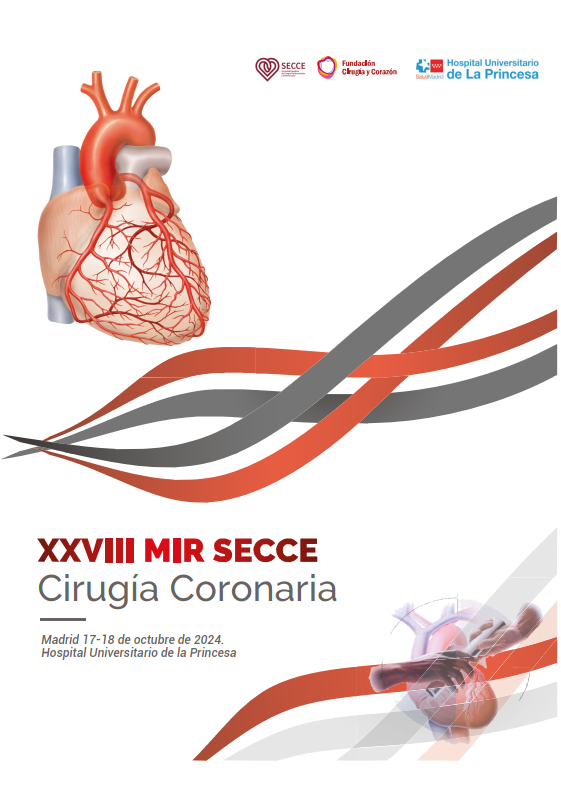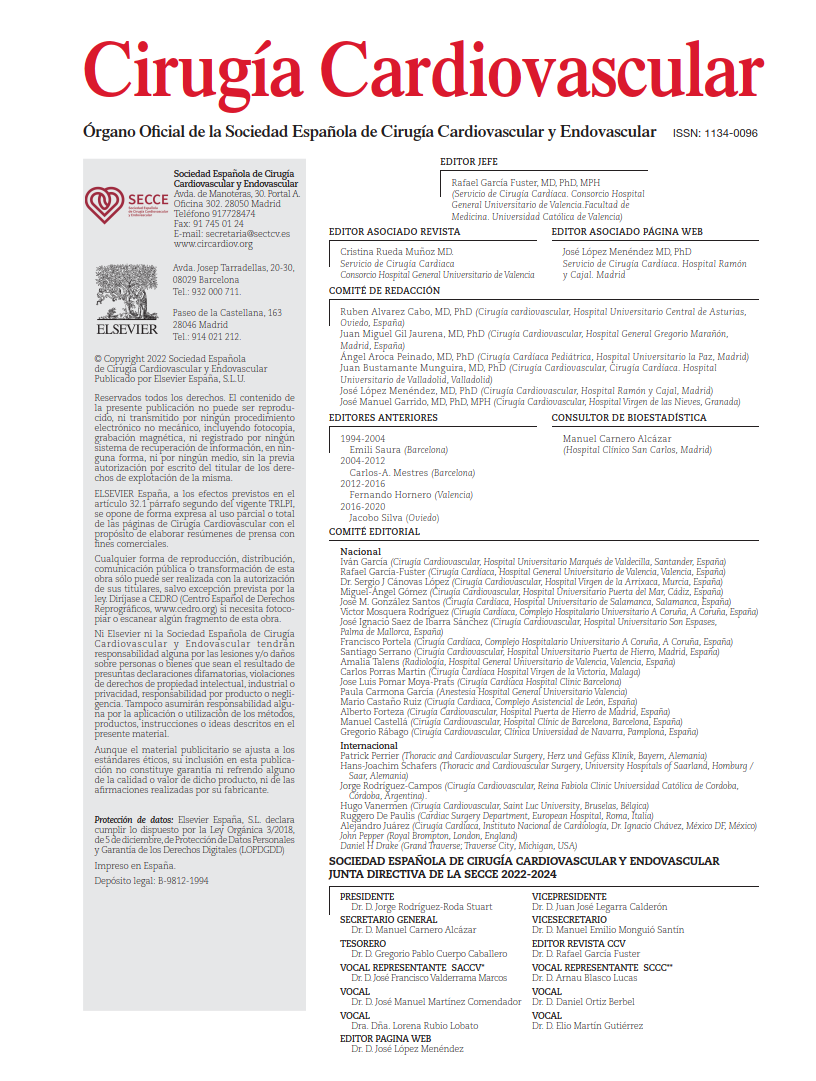Post-infarction ventricular septal defect (AMI-VSD) remains one of the most devastating mechanical complications of acute myocardial infarction, characterized by extremely high mortality. Although its incidence has decreased due to early revascularization strategies, its management continues to pose a major clinical challenge, primarily due to the narrow therapeutic window for successful intervention. Current European guidelines recommend initial hemodynamic stabilization and delayed surgical repair whenever feasible, to allow for safer septal defect correction. In clinical practice, this approach has been progressively adopted. According to the largest European survey published in 2022—also discussed in our blog—90% of surgically managed AMI-VSD cases were treated with a delayed approach, typically under veno-arterial extracorporeal membrane oxygenation (VA-ECMO) support. This modality provides rapid and full cardiopulmonary assistance and remains the preferred option in cases of profound cardiogenic shock (SCAI E). Nevertheless, its prolonged use is associated with a high risk of severe complications.
In this context, the paradigm of circulatory support in cardiogenic shock—particularly of ischemic or dilated cardiomyopathy origin—is undergoing a profound transformation. While VA-ECMO remains the first-line support in advanced stages (SCAI E/INTERMACS 1), axial flow left ventricular assist devices such as Impella® are emerging as alternatives to centrifugal devices like Centrimag® in more stabilized or less critical patients (SCAI D). Their reduced invasiveness—especially via femoral (surgical or percutaneous) or axillary (surgical) access—and ease of implantation have fueled rapid adoption. Among these, the novel Impella® 5.5 stands out, offering higher flow rates than previous versions, lower hemolysis rates, and a potential support duration of up to three months. Although surgical axillary access (minimum diameter 7 mm) is required, this enables early mobilization and improved functional recovery. However, evidence supporting the use of Impella® as a preoperative stabilization—or “cooling”—strategy in AMI-VSD remains limited.
This systematic review evaluated the clinical outcomes of using the Impella® device as circulatory support prior to surgical or percutaneous treatment in patients with post-infarction VSD. A systematic search was conducted in the Medline and EMBASE databases, identifying 20 studies (12 case reports, 6 case series, 1 retrospective review, and 1 imaging-based study), which collectively included 68 adult patients with post-infarction VSD managed with Impella® before defect closure. Over 95% of the patients were in cardiogenic shock at the time of implantation, underscoring the critical severity of this cohort. Various Impella® types were used: the CP model was most common (48.5%), followed by the 5.0 (33.3%), 5.5 (10.6%), and 2.5 (7.5%). A total of 22% of patients required biventricular support with ECMELLA (Impella® plus VA-ECMO).
Of the total defects, 62% were posterior. Most patients (60%) underwent surgical closure, while 12% received percutaneous closure, 3% underwent heart transplantation, and 25% received medical therapy alone. Overall in-hospital mortality was 47%. Notably, surgical Impella® devices were associated with lower mortality (35% vs. 58%) and fewer complications compared to percutaneous devices. The most frequent complications included major bleeding (24%), hemolysis (9%), acute limb ischemia (6%), and device malfunction (4%).
The authors concluded that Impella® may play a meaningful role in the preoperative management of post-infarction VSD by offering effective hemodynamic support and allowing for delayed definitive treatment in unstable patients. They emphasized that its use improves peripheral perfusion and enables ventricular unloading, either as a standalone strategy or in combination with other devices such as VA-ECMO (ECMELLA strategy). However, they noted that Impella is associated with non-negligible complications, particularly in the percutaneous version, warranting careful patient selection and close monitoring.
COMMENTARY:
This systematic review gathers the currently available evidence on the use of Impella in patients with post-infarction ventricular septal defect prior to surgical or percutaneous repair. One of the most striking findings is that 95% of patients were in cardiogenic shock at the time of device implantation, reflecting the critically ill profile of this population. Despite this, the observed in-hospital mortality was 47%, significantly lower than the historically reported rates: up to 90% with conservative management, 50–60% with early surgery, and 20% or less when surgical intervention is delayed beyond seven days.
Moreover, mortality was lower among those treated with surgical devices (35%) compared to percutaneous devices (58%), and the rate of complications was also reduced, supporting the feasibility of prolonged support with high-capacity unloading devices. Impella® provides effective left ventricular unloading, reducing low output syndrome and improving tissue perfusion. Stabilizing the patient over several days while promoting fibrous tissue formation around the septal defect may enhance the success of delayed surgical repair. In this setting, Impella® shows promise not only as a bridge to surgery but potentially as a bridge to transplantation.
Nevertheless, the device is not free of risks—hemolysis, major bleeding, and embolic events must be anticipated. A particularly unique concern is the potential for shunt inversion (right-to-left), which may lead to systemic hypoxemia and requires precise hemodynamic management.
The main limitation of this review lies in the quality of the included evidence: most studies were case reports or small case series, lacking control groups and direct comparisons. The absence of consistent cardiogenic shock stratification further limits practical applicability. Still, the review offers an insightful perspective on a strategy gaining traction in experienced centers.
In cardiogenic shock scenarios secondary to post-infarction VSD, Impella® enables patient stabilization and clinical optimization, facilitating safer delayed repair or even acting as a bridge to transplant in selected cases. Evidence suggests that surgical devices, such as Impella® 5.0 or 5.5, may offer significant advantages over percutaneous alternatives, particularly in terms of durability and lower complication rates. However, their indication should be carefully individualized, taking into account the hemodynamic profile, defect anatomy, and potential for combination with other support modalities like VA-ECMO.
Mechanical circulatory support has fundamentally transformed the management of a condition historically deemed fatal, opening therapeutic windows where once only a race against time existed. In patients in extremis with cardiogenic shock, VA-ECMO remains the first-line tool due to its rapid deployment and complete cardiopulmonary support. Yet, its inherent complications limit mid-term outcomes. In contrast, axial flow devices like Impella® are emerging as effective and versatile alternatives, particularly when applied early and strategically in complex clinical scenarios.
The Impella CP®, implanted percutaneously in the cath lab, represents an accessible option for rapid stabilization, especially in the hands of interventional cardiologists. However, the Impella® 5.5, with its enhanced flow, reduced hemolysis, and extended support duration, may prove to be the ideal tool—provided the patient reaches the operating room while still in a reversible shock stage. In post-infarction VSD, buying time does more than improve prognosis—it may mark the difference between a predictable tragedy and a real chance for recovery.
REFERENCE:
Gemelli M, Ronco D, Di Mauro M, Meani P, Kowalewski M, Schwartz G, Arora RC, et al. The role of Impella in the pre-procedural management of post-infarct ventricular septal defect: a systematic review. Interdiscip Cardiovasc Thorac Surg. 2024 Dec 25;40(1):ivae212. doi: 10.1093/icvts/ivae212.



